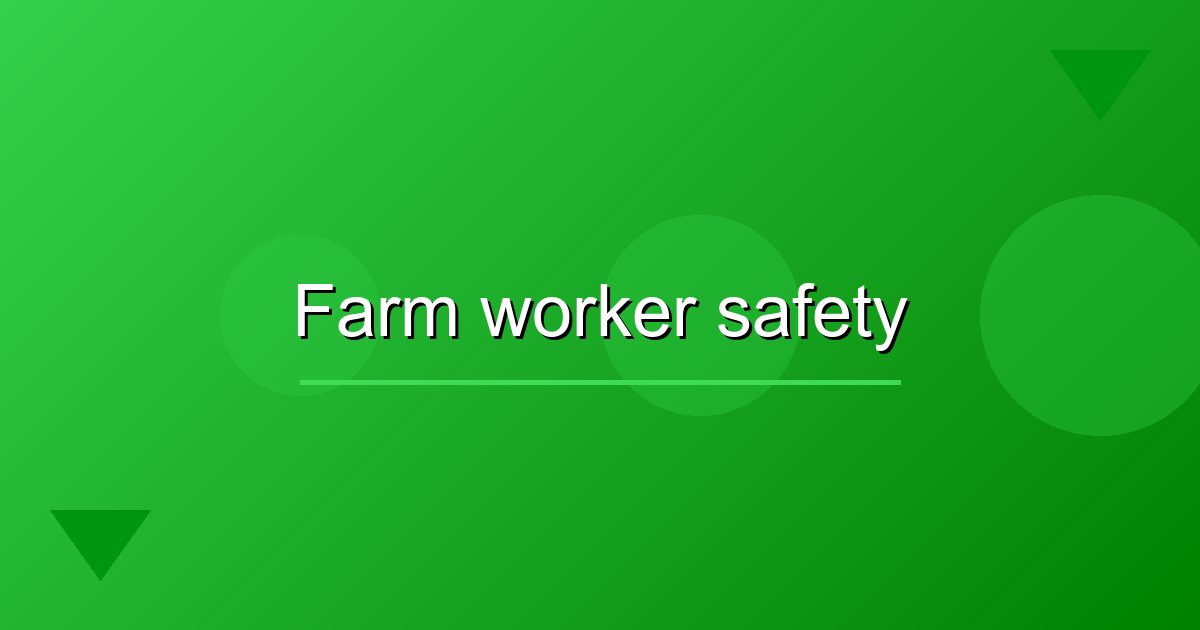Imagine being unable to understand critical safety instructions on the job, putting your life at risk every day. This is the harsh reality for many farm workers who face a significant language barrier. The farming industry is particularly hazardous, with workers facing numerous risks daily. You may wonder how to ensure safety for your workers, and the answer lies in multilingual training. In this article, you will learn how to implement effective programs on your farm, improving worker safety and reducing accidents.
The Importance of Language Training in Farm Worker Safety
The farming industry is particularly hazardous, with workers facing numerous risks daily. Language barriers can lead to misunderstandings of safety instructions, putting workers’ lives at risk. For instance, a worker who doesn’t understand English may not comprehend the proper use of personal protective equipment, leading to accidents and injuries.
- Improved understanding of safety procedures and protocols
- Enhanced communication between workers and supervisors
- Increased job satisfaction and reduced turnover rates
These benefits can be achieved through multilingual instruction, which is essential for farm worker safety. By providing training in multiple languages, farm owners can ensure that their workers understand critical safety information, reducing the risk of accidents and injuries. For example, a farm worker who speaks limited English may be more vulnerable to exploitation, but with proper training, they can better advocate for themselves and their colleagues.
Implementing Effective Multilingual Training Programs
To address the language gap in farm worker safety, it’s essential to develop a comprehensive training plan. This starts with conducting a language assessment to identify the languages spoken by farm workers. For instance, a farm in California may have workers who speak Spanish, Portuguese, and indigenous languages. By understanding these language needs, you can develop a training plan that addresses the specific requirements of your workers.
- Identify qualified trainers or instructors who can provide multilingual instruction
- Develop a training plan that includes visual aids and hands-on training to facilitate understanding
- Provide opportunities for workers to practice their language skills, such as role-playing exercises
Best practices for multilingual training include using visual aids like diagrams and videos to explain complex safety procedures. For example, a video demonstrating how to properly use a tractor can be translated into multiple languages, ensuring all workers understand the safety guidelines. Additionally, encouraging feedback and evaluation can help improve the training program, making it more effective in reducing accidents and improving overall safety.
Resources and Support for Multilingual Training
To address the language gap in farm worker safety, it’s essential to utilize available resources and support for multilingual training. The Alliance for Food and Farming provides valuable resources and support for farm worker safety, while the USDA offers funding opportunities for farm worker training programs. Other government initiatives and programs may also be available to support multilingual training.
Some key resources include:
- The National Farm Worker Ministry, a non-profit organization that provides support and resources for farm workers
- Local universities and colleges that offer extension programs or courses in agricultural safety and language training
- Community resources, such as language schools and cultural centers, that may offer multilingual training programs
By leveraging these resources, farm owners and managers can create effective multilingual training programs that improve worker safety and reduce the risk of accidents. For instance, the USDA‘s funding opportunities can be used to develop training programs that cater to the specific needs of farm workers with limited English proficiency.
Effective Communication is Key
Multilingual training is crucial for ensuring farm worker safety and reducing language barrier risks. By implementing effective training programs, farmers and ranchers can guarantee that their workers understand critical safety instructions.
- Share this article with others who might benefit
- Leave your comment below to share your thoughts on language training programs.

